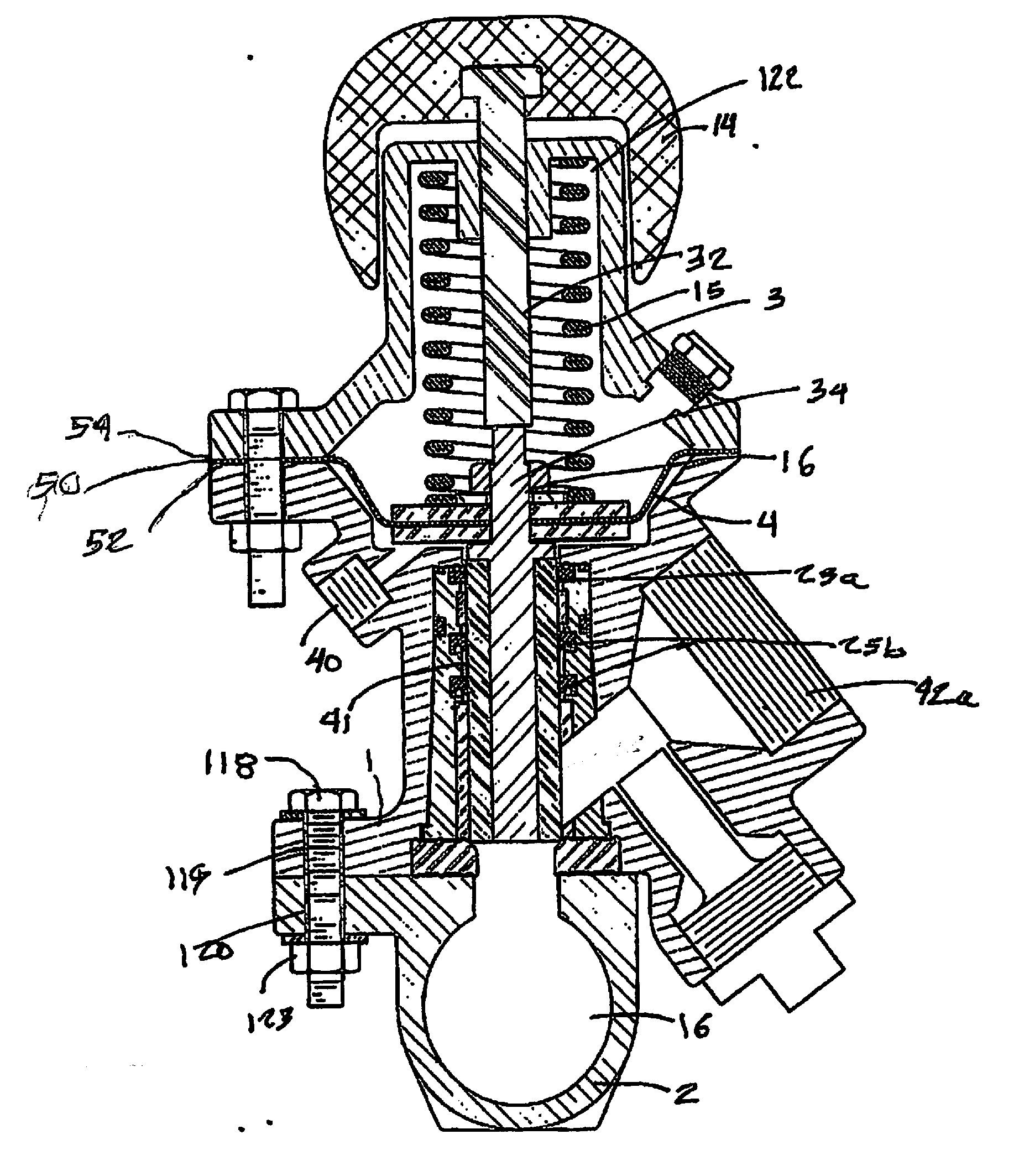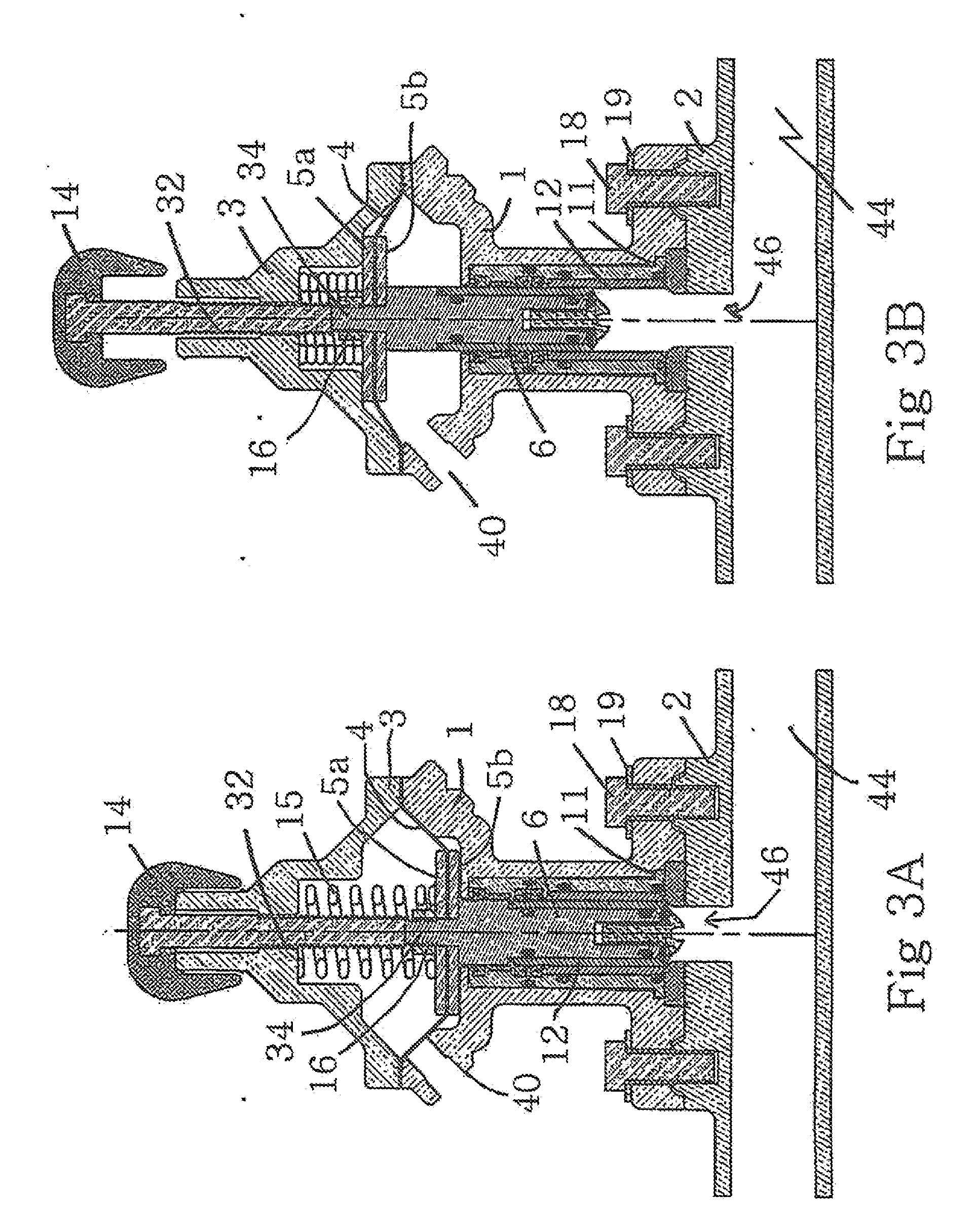Media Control Valve
a control valve and media technology, applied in the field of media control, can solve the problems of not allowing the plunger to reciprocate within the spool, affecting the operation of the valve, and damage to the valve beyond use, so as to facilitate maintenance and repair, reduce or even eliminate the tendency of various components to bind during operation, and ensure the proper alignment of the various components
- Summary
- Abstract
- Description
- Claims
- Application Information
AI Technical Summary
Benefits of technology
Problems solved by technology
Method used
Image
Examples
Embodiment Construction
[0047]The plunger and bore assembly in the lower valve body are substantially different from prior art assemblies and for sake of clarity and consistency the following terms are used throughout this application when referring to the plunger assembly and the bore or body cavity components in the valve body:
[0048]Valve body 1, which houses the valve plunger assembly, the spool assembly and the lower diaphragm plate.
[0049]Plunger 6, this is an assembly and comprises the plunger stem 34, the plunger 6, the plunger jacket 7 on the exterior of the plunger 6 and the various seals 8, 20 (FIG. 5a) mounted on the plunger or jacket. The plunger assembly may include a washer or seating ring 10 and a retaining screw or fastener 17 or other securement means for holding the plunger assembly including the sleeve, seals and seating ring in assembled relationship.
[0050]Body cavity 76 (FIGS. 4, 6, 7 and 9, for example) is the central internal cavity of the valve body and houses spool 11 and the spool ...
PUM
 Login to View More
Login to View More Abstract
Description
Claims
Application Information
 Login to View More
Login to View More - R&D
- Intellectual Property
- Life Sciences
- Materials
- Tech Scout
- Unparalleled Data Quality
- Higher Quality Content
- 60% Fewer Hallucinations
Browse by: Latest US Patents, China's latest patents, Technical Efficacy Thesaurus, Application Domain, Technology Topic, Popular Technical Reports.
© 2025 PatSnap. All rights reserved.Legal|Privacy policy|Modern Slavery Act Transparency Statement|Sitemap|About US| Contact US: help@patsnap.com



